The Fascinating Life of a Female Hummingbird
Updated: May 11, 2023
Though more subtly colored than a male, a hard-working female hummingbird leads a much busier and more fascinating life!
What Life Is Like for a Female Ruby-Throated Hummingbird
When it comes to hummingbirds, the spotlight is usually on the flashy, colorful males. The female birds, more subtly colored and less flamboyant in their actions, are often underappreciated. In fact, however, female hummingbirds lead more active and interesting lives than their mates. We decided to demonstrate by following one typical female ruby-throated hummingbird from her wintering grounds through the first part of the nesting season.
Hummingbird male vs female: learn how to tell the difference.
Winter in the Tropics
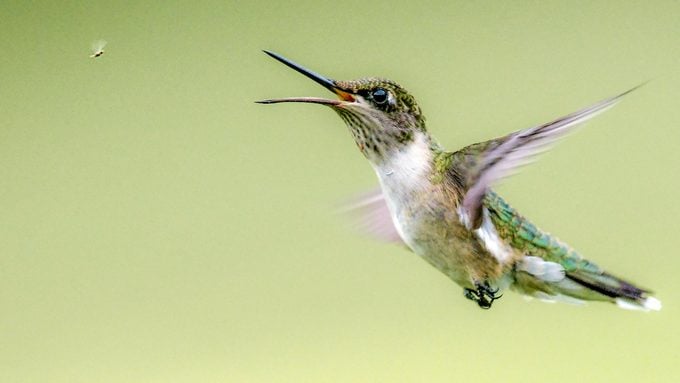
The story begins in late January in Central America, along the foothills of Costa Rica, where a female ruby-throat arrived in October from her summer nesting territory in Pennsylvania. Here in the tropics, the weather is warm, flowers bloom everywhere, and it’s always easy to find tiny insects to eat. Nearly a dozen other species of hummingbirds are living nearby, in the forest or along the edge where this ruby-throat spends her time, but mostly they live without direct competition.
This female hummingbird has had an easy time of it for the last three months, but soon she’ll start to become restless, and her instincts will tell her to go north.
Learn more about where hummingbirds migrate in winter.
Heading Home for Summer
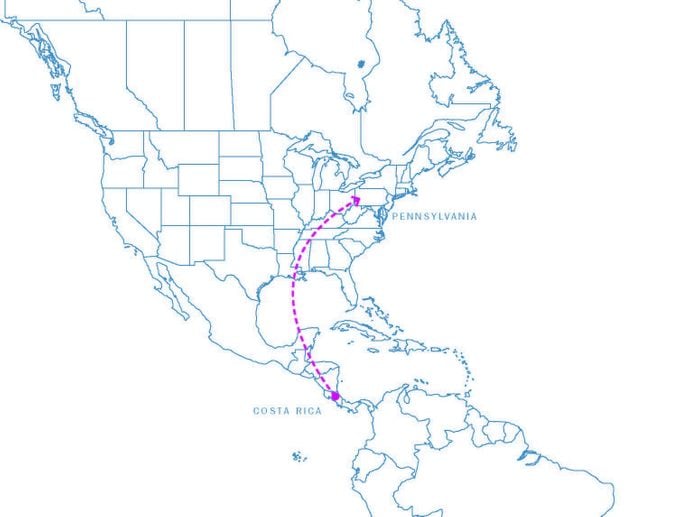
First the heroine of our story begins gaining weight. This is a good thing, because the fat she puts on will fuel her migratory flight. During some seasons, ruby-throats can double their body mass in about a week, going from about a 10th of an ounce up to a fifth.
In late February she begins moving north through Central America. Traveling by day and sleeping at night, she flies out of Costa Rica and through Nicaragua, Honduras and Guatemala. Then she heads for southeast Mexico. It’s a leisurely trip, covering about 1,500 miles in six weeks. When she reaches the north coast of Mexico’s Yucatan Peninsula in mid-April, she faces a major challenge.
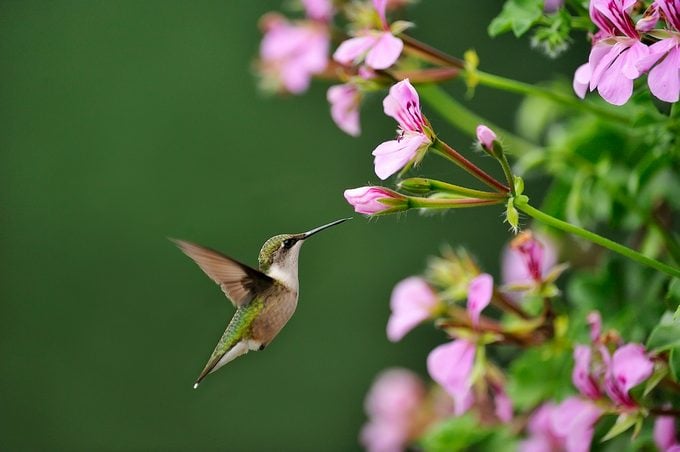
The shortest route north now is directly across the Gulf of Mexico—600 miles over open water. Even with favorable winds, the flight will take her about 18 hours. Many other migrants are traveling the same route at this season, including small songbirds, but it’s an extraordinary journey for a creature weighing less than a nickel. When she completes the crossing, arriving on the U.S. Gulf Coast, she must quickly find food so she can build up her strength and keep flying north.
Did you know: Female hummingbirds in the West also lead amazing lives. A migrating rufous hummingbird doesn’t have to cross the Gulf of Mexico, but her travels are still very impressive. She might make it all the way up to southeast Alaska to nest.
When should you put out hummingbird feeders in spring?
Back at the Nesting Grounds
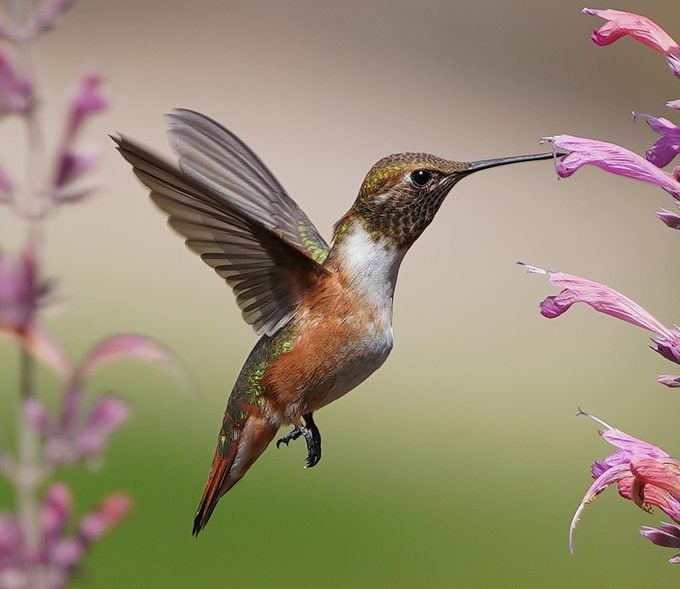
The female ruby-throat reaches central Pennsylvania the second week of May. Her summer territory is in a suburban neighborhood with flower gardens and plenty of trees. Male ruby-throats have already arrived. A few are in the neighborhood, each one fiercely defending a small territory by perching high, chasing away intruders and performing courtship displays.
Unlike many songbirds, the female ruby-throat won’t select a mate and move in to share his territory. She establishes her own little home range and mates with one of the nearby males. And after the first date, her Prince Charming won’t pay any more attention to her. He’ll be off trying to court other females, leaving each new mate to start raising her young by herself.
Discover 22 jaw-dropping hummingbird facts.
Starting a Family
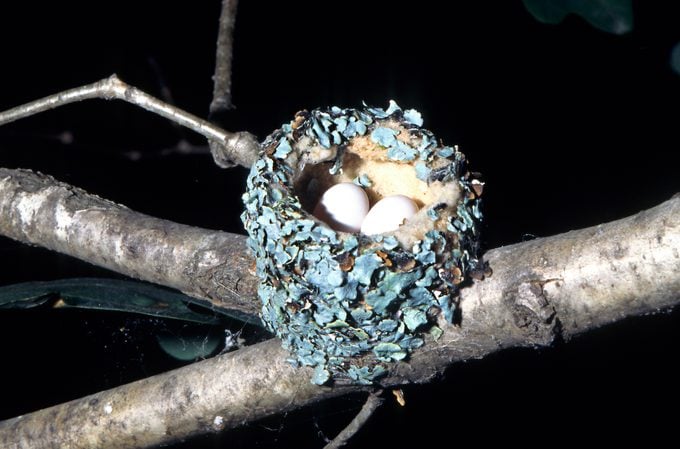
In the third week of May, the female ruby-throat chooses a site for her nest. Typically it’s out near the tip of a long horizontal tree branch 15 to 20 feet above the ground. The construction of a hummingbird nest is amazing. First she carefully gathers scraps of spiderweb to form a sticky pad on a branch. To this she’ll affix a flat pad of plant down before building up the sides of the nest with more of the same soft, pliable materials.
It may take her hundreds of trips over a week or more to gather what she needs and press it into place. As a finishing touch, she’ll select tiny flakes of lichen to camouflage the outside of the miraculous little cup.
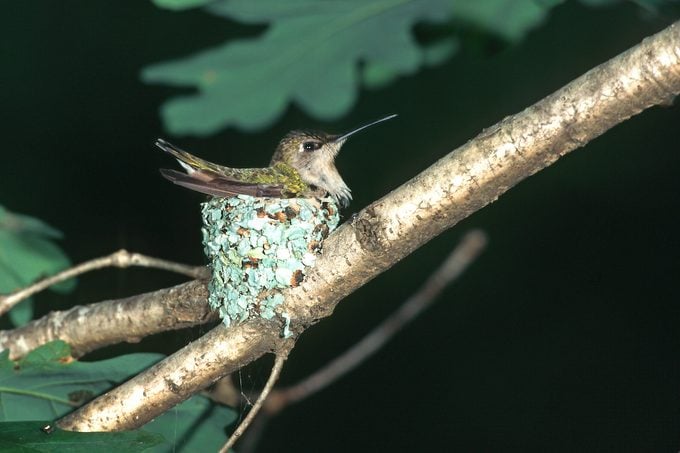
After the nest is done, she lays a tiny egg and soon begins incubating it. One to three days later, she lays a second one. For the next two weeks or so, she will sit on them all night and most of the day, leaving the nest several times a day to feed herself. When the eggs hatch, our already industrious little bird turns into a dynamo.
Psst! Learn how to get a trapped hummingbird out of your garage.
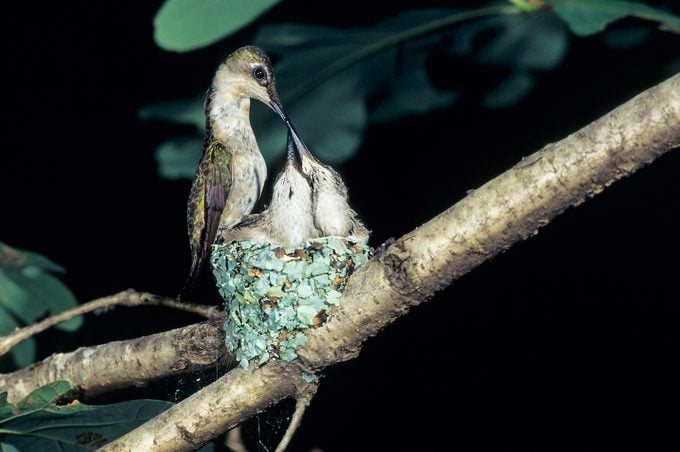
The ruby-throat visits flowers, drinking as much nectar as she can gather and swallowing tiny insects as well. Then she returns to the nest and sticks her bill deep into the throat of a baby, pumping her neck muscles as she regurgitates the nectar mix into its stomach. Then she feeds the other baby.
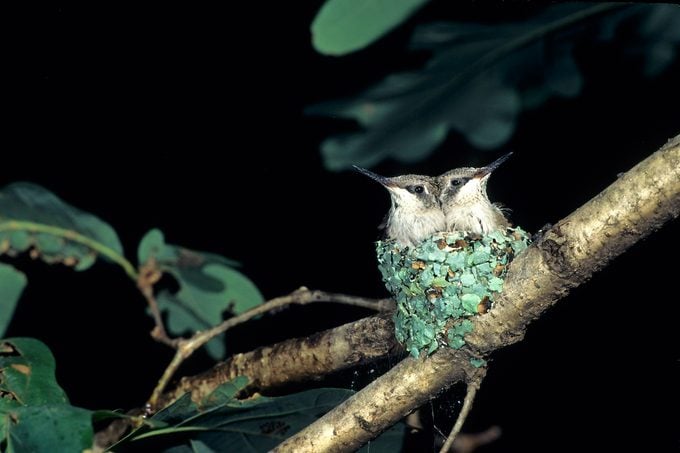
If it’s chilly, she may sit on top of the young for a minute to brood them and warm them up. Then she’s off again. It requires an exhausting effort to get enough food for herself and both of her young.
Find out what foods, how often and how much hummingbirds eat.
An Empty Nest
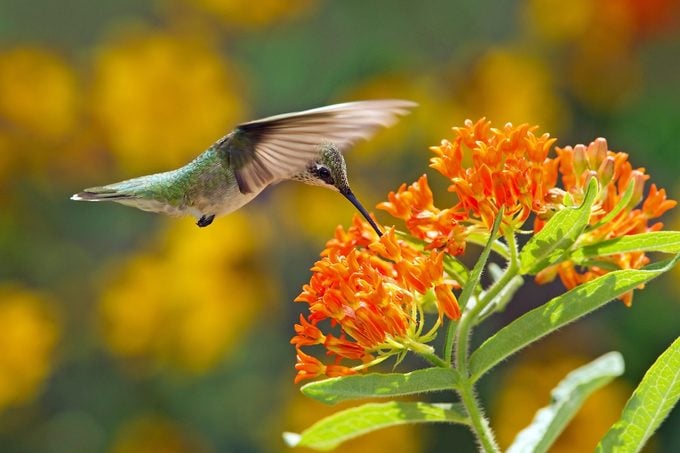
For about three weeks the baby hummingbirds grow, and the tiny nest, with its spiderweb magic, actually stretches to accommodate them. They begin exercising their wings after about 15 days, standing up on the edge of the nest and buzzing their wings vigorously. A few days later, one at a time, they abruptly leave the nest, launching into an awkward first flight.
At first the fledglings can’t feed themselves; it takes practice to be able to hover at a flower and drink nectar. The female will continue to feed them for up to a week after they leave the nest as they learn how to find food. Then the young birds are on their own. They even migrate solo. And at the same time, our tireless little mother may already be building another nest, preparing to raise a second brood for the season.
What they lack in flash and finery, these feathered sprites make up for in spunk, determination and fine parenting skills. So the next time you see a female hummingbird, be sure to give her a little extra attention. She’s earned it!
Check out 11 frequently asked questions about feeding hummingbirds.
How You Can Help a Female Hummingbird
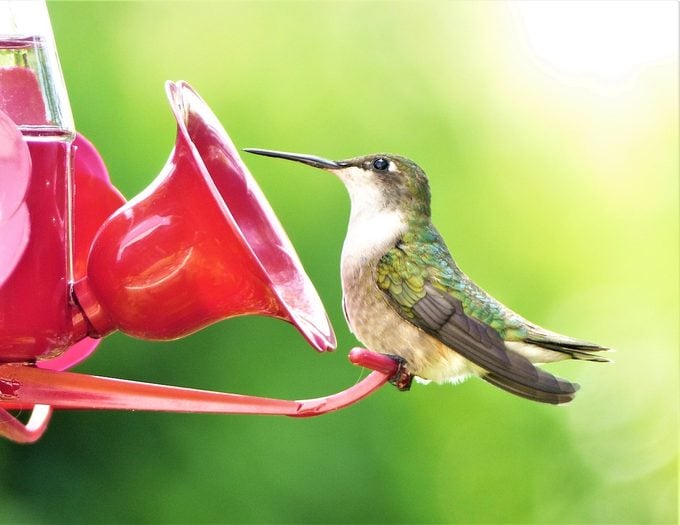
Want to lend female hummingbirds a hand? Try these tips:
- Keep your sugar-water feeder full. If it’s empty, the birds will look for food somewhere else.
- Offer more than one feeder. Yes, hummingbirds can get protective over feeders in summer. Help defeat a territorial male hummingbird by hanging feeders in a couple of locations.
- Keep your feeders clean. You should change the water every few days and clean your feeder once a week to keep it as free of bugs and grime as possible.
- Plant nectar-rich flowers. Female hummingbirds can use every nectar source they can get.
Next, learn whether a hummingbird will nest in a birdhouse.
